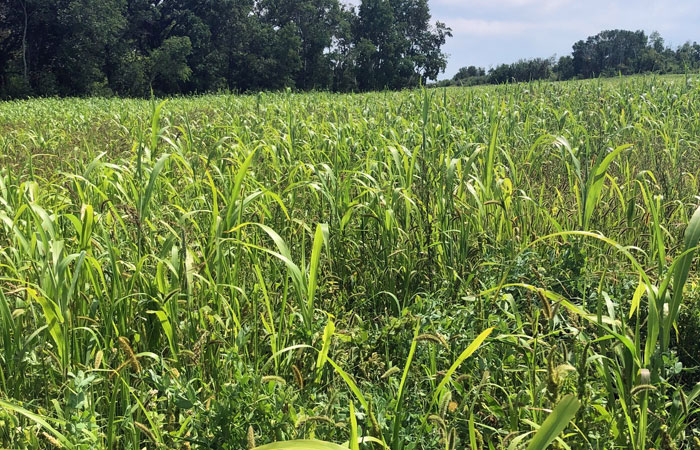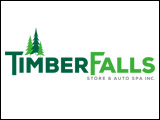Over the last few years, terms like regenerative agriculture (a.k.a regen ag), cover crops, soil health, carbon sequestration and soil biology/microbes have been popping up more and more in agricultural circles and have become the topic of discussion for many of us. This sudden surge in interest has been further fueled by federal, provincial, and corporate funding designed to get farmers on board with a series of practices aimed at improving the health of (i.e. the life within) our soils.
But what is regenerative agriculture and how does it relate to all of the other terms we hear thrown around alongside it? I’ve yet to come across a truly satisfactory and succinct definition of regenerative agriculture but, to be honest, I don’t need one. For me, regen ag is an approach to agricultural management that focuses on the soil as a living (eco)system that can be used to address our most pressing on-farm issues. This includes water management, drought and flood resilience, soil compaction, crop quality, erosion, the use of synthetic inputs (pesticides and fertilizers) as well as the economic/financial viability of the farm, itself, and so much more.
One of the most empowering aspects of regenerative agriculture is that in order to start out you do not need to purchase specific equipment or expensive soil amendments, and you don’t need to follow any one “expert’s” prescriptive plan to be successful. Anyone can get started by simply making smart plant choices.
When you think about plants (including crops, garden plantings, native areas etc.) in a regenerative system you must think of them as tools that you can use to address a need. Gone are the days when a farmer has the luxury of thinking of their crop as a simple commodity to be grown and sold. Each plant that is put in the ground (by you or by Mother Nature) has something to offer to the farmer and the farmer must seek to understand that plant’s potential and use it to their advantage.
For example, the large-rooted radish (e.g., daikon) can break through compaction, the fibrous roots of grasses can spread and build carbon and soil organic matter, the overwintering lifecycle of fall rye and perennial plantings can offer protection to the soil from erosion. Similarly, the thistle patch may be telling you that you have a compaction issue, the flush of spring weeds that you have excess nitrates and the horsetails that your soil is wet for too long. Once we begin to take note of what’s going on around us and start to view plants as our tools and allies the opportunities become endless.
To get started, straightforward changes to a crop rotation, such as including a legume in rotation, can work to restore nitrogen reserves and reduce the need for synthetic fertilizer. The inclusion of perennial hay (e.g., alfalfa) in rotations can drastically reduce unwanted weeds such as Canada thistle. Even more powerful results can be seen when multiple species of plants are used together in intentional combinations such as cover crops (grown in lieu of cash crops), intercrops (grown alongside cash crops) and relay crops (seeded into cash crops to do most of their growing after the cash crop is harvested). If you have livestock, switching to a rotational grazing system instead of continuous grazing or grazing cropped areas can bolster the soil building process. Each of these actions can address possible issues
while simultaneously building up the health of the soil by feeding soil biology (helpful microscopic fungi, bacteria, and others) and creating resilience within the soil.
For many, the transition to regenerative agriculture has come from a very personal realization that they can no longer afford to farm in the “same old way”. Not only is the cost of inputs skyrocketing but the need for more on every acre increases year over year. Productivity today is not what it was 50 years ago. Even in organic systems where the cost of inputs is mostly avoided, there is recognition that overworking of soil is leading to an increasing number of problems that need new and creative answers.
If you have thought about the longevity of your farm and see a need for change but are unsure of where to start, you are not alone. This year in southeastern Manitoba several dozen farmers – from small mixed farms to large grain operations – are on their journey into regenerative agriculture. Some of these farmers are just starting out, adding a small area of cover crop or making a small change to their rotations, while others have decades of experience under their belts – making big changes and seeing big results.
The regenerative journey never ends, offering us each the opportunity to outdo ourselves over and over. Most importantly, with each farm that joins the regen ag community comes new experiences, allowing us all to move forward together, learning from one another’s mistakes and building upon our combined successes.
For those interested in meeting like-minded people I strongly recommend attending a local field day, reaching out to a community innovator, or checking out MFGA’s Regen Ag Conference in the fall. You can also visit websites including those hosted by Regeneration Canada and Understanding Ag for more information or sign up for a free course like those offered through the Farm Resilience Mentorship (FaRM) Program. When it comes to regenerative agriculture, the most important thing you can do is to take the first step. Reach out to a colleague, investigate a new practice, or read up on a new method.
Next month I’ll be following up with a second article exploring the principles of regen ag and how you can get started. But for now, I’d like to leave you with one final thought. If you’re a farmer and you were to walk away from your farm today, would you be leaving your land and your soils in a better state than you inherited them in? If not, why not? If you’re not a farmer, consider the role you can play in addressing communal off-farm soil-based issues, such as in-town flooding, nutrient runoff from lawns and urban heat bubbles by improving the way you manage your soil. We all have a role to play in rebuilding our soils and putting them to work for us, and that’s why regen ag truly is for everyone.




